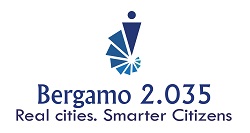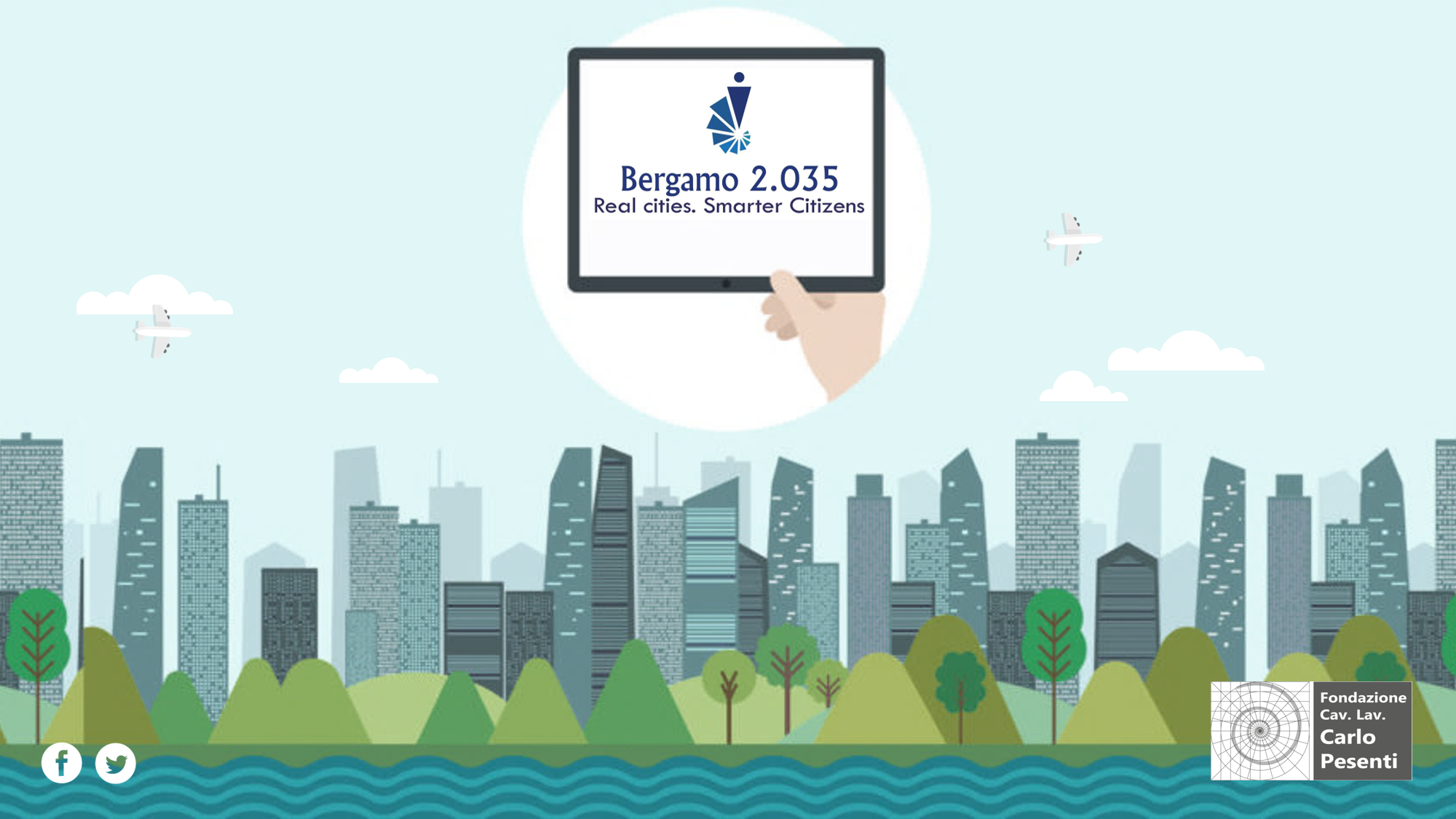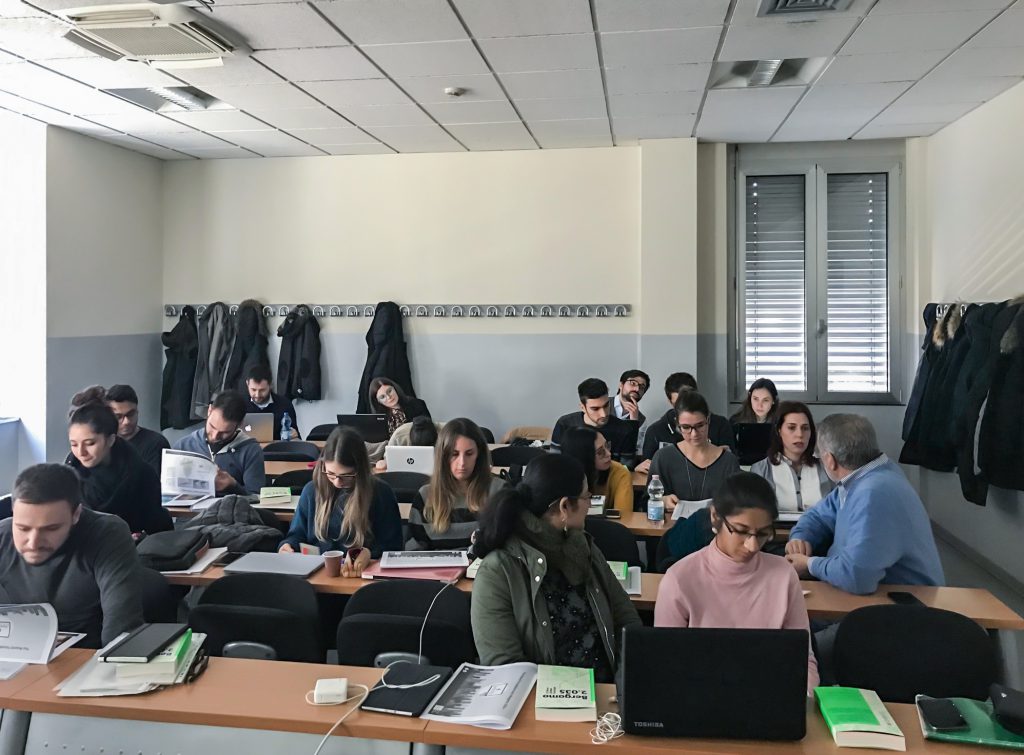The Future of Air Travel
DESIGN RESEARCH STRATEGIES. User-Centered methods for Innovative Systems, Environments and Activities
“The Future of Air Travel” is the the main research topic for this new academic year 2018-2019, in ““Responsive Environments and Artifacts” program. The course is part of the Bergamo 2.035 | REAL Cities – Smarter Citizens, a multi-tier, multi-year academic collaboration between the University of Bergamo, the Harvard Graduate School of Design and the Pesenti Foundation with the patronage of the Municipality of Bergamo.
Course description
The increasing complexity of today’s urban dynamics, business operations, digital technologies, and social transformations calls for alternative ways of looking at the cities we live in.
In fact, we can no longer think of human and non-human activities as individual layers (economic, social, cultural, etc.), but rather as the intersection of multidisciplinary factors and related interactions.
Innovative research and design strategies can help simplify and humanize complex systems at any level and scale.
This course introduces a design-driven method developed at the Harvard GSD Responsive Environments and Artifacts Lab (REAL) in collaboration with the University of Bergamo for studying and creating solutions that tackle pressing challenges of our cities.
In particular, the course leverages on theories and principles of design thinking and user-centered design, focusing on the importance played today by the understanding and design of specific experiences in meeting the needs of the user/citizen/urban actor.
The course is part of “REAL Cities / Bergamo 2.035”, a research program between the University of Bergamo and the Harvard Graduate School of Design, with the support of the Pesenti Foundation.
Using the city of Bergamo as a prototypical case, the course aims at analysing and making evident relevant social, economic, and urban issues in the territory.
This year the research will particularly focus on the the topic of the future of air travel, enhancing the passenger experience and improving aviation and urban transport systems.
Design-thinking brainstorming sessions, field analysis, and design tools will allow students to study and represent user experiences and urban dynamics, in preparation for the development of design concepts and prototypes in the following 2019 Spring course with Harvard GSD students.
To that end, students will be introduced to the role of new media, network, interactive, augmenting, and sensing technologies in opening up opportunities for the design of business activities, digital systems, social changes, urban interventions, cultural initiatives, and responsive environments.
Future of Air Travel
Flying is one of the most ambitious and fascinating achievements in history.
The technological innovations in the air travel industry in the last 20th century are arguably unparalleled. Currently, air travel is considered to be one of the most ubiquitous forms of transport – the notion of travel is almost synonymous with flying. As a result, our basic human expectations of reliability, comfort, and ease have become assumptions.
These seemingly simple expectations are usually at odds with an industry that is in constant, rapid growth to new geographical regions. The success of this industry is measured by air-tight logistics in an extremely complex system with zero tolerance for technological failure – all while being perpetually threatened by external factors.
Because of all this complexity, the experience of air travel can at times be extremely frustrating. Designing for these basic human expectations becomes a monumental task of fine negotiations between human experience and issues of logistics, safety, and economics.
This is true for all aspects of traveling – virtual as well as physical and spatial. Under this lens, students of the REAL Cities / Bergamo 2.035 research initiative will pursue a holistic inquiry into the complex topic of the future of air travel that will result in design concepts and proposals at different scales.
Research approaches
A. Experiential Approach: Mapping and Enhancing the Traveler Experience
The primary inquiry on this research will be a technologically augmented and enabled human experience. The aim will be to find quantifiable ways to map and enhance the traveler experience, measured and assessed against opposing forces such as logistic, security, and economics.
The outcome of the research will be technologically-driven design strategies to engineer solutions and ideas to find sweet spots for these opposing demands. This study will have a strategic impact on the improvement of all aspects of air travel.
Research questions include:
– The pick-up and drop-off at airports always seem like they are an inconvenience. How can this process be more pleasant and allow for better time management?
– How can we have high security and still ensure that the experience is pleasant? What are the psychological factors that affect this experience, and how can we address these with different design strategies?
– Long lines are unavoidable in any complex system that can have bottlenecks. How can we shorten wait lines/times or create the perception of shorter waiting?
– It has been used as a joke that the first suitcase on the conveyor belt belongs to no one. How can we improve the luggage distribution or the experience of waiting at the carousel? Could we implement simple technologies that track luggage proximity and prompt the passenger?
– Lack of information and communication can cause unnecessary anxiety. How can we design for seamless communication and optimal levels of awareness?
– When a passenger lands in a new airport, the lack of situational awareness can result in high levels of frustration. How can we use new technologies and new materials to address this issue? How do we improve wayfinding in airports, especially during renovation and retrofitting projects?
– What can be a sweet spot between predictability and pleasant surprises when it comes to designing the airport experience?
B. Systemic Approach: Infrastructures, Networks and Urban Impact
Airports and air travel have massive impacts on cities and on the flow of people, material goods, and energy resources. In some cases the growth of cities and tourism is purely attributed to new destinations adopted by airlines, and conversely the growth of cities can cause large strains on air travel.
This research track will look at the relationship of the airport to the city and its impact on the urban dynamics, transportation systems and physical spaces of the city-airport environments.
The research will particularly investigate the role of airports in influencing the development of
the territory from a multi-level perspective:
– Economic development (e.g., exchange of people and goods, new job opportunities).
– Cultural development (e.g., tourism, exchange of students and people).
– Social development (e.g., social immigration, new forms of leisure).
– Urban infrastructures (e.g., new connections and related facilities).
The course will study the interaction among these different layers, and how they can be designed and organized systematically to improve the impact of the Orio al Serio airport for the city of Bergamo.
Course topics
– DESIGN RESEARCH: overview of the interplay between design and research. Methods of pursuing novel research through design and exploring innovative design through research. Examples and case studies from Harvard GSD complement the theoretical approach.
– DESIGN THINKING: study of design thinking methodologies, with the application of novel approaches and interdisciplinary strategies to tackle urban problems at different scales and fields. Combining subjective analysis with objective data, students will reframe urban challenges through alternative perspectives that question norms and conventions.
– HUMAN-CENTERED DESIGN AND USER EXPERIENCE: principles of user-centered design, with a focus on strategies to evaluate and envision user experiences from the standpoint of different individual categories. Strategies include: user experience scenarios, persona studies, user journey design and simulations, and digital mockups.
– SMART CITIES: definitions, models and case studies of smart cities. Putting the human experience in the forefront, analysis of the impact of the use of technology in the dynamics, functioning mechanisms, and experiences of cities. Case studies will focus on urban interventions that foster positive changes and employ technology creatively.
– RESPONSIVE TECHNOLOGIES: opportunities and repercussions of the integration of new media, sensing and interactive technologies in cities, with a focus on technological longevity, dynamic adaptation, and augmented realities.
– FUNDAMENTALS OF URBAN ANALYSIS: application of methods and tools to understand the urban configuration as well as the dynamics of places, with an emphasis on mapping urban systems and modes of transport.





